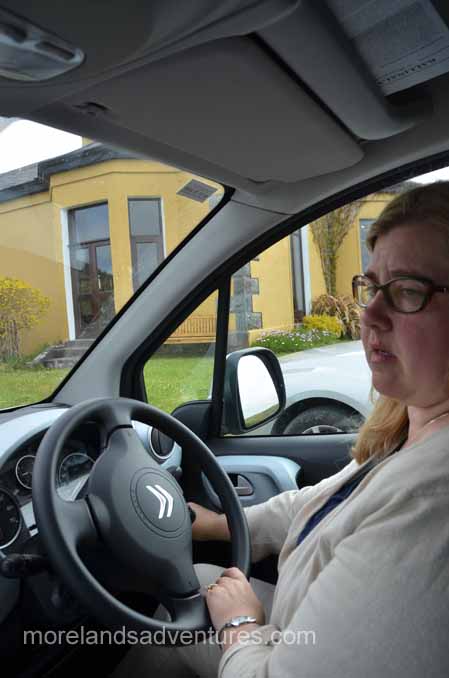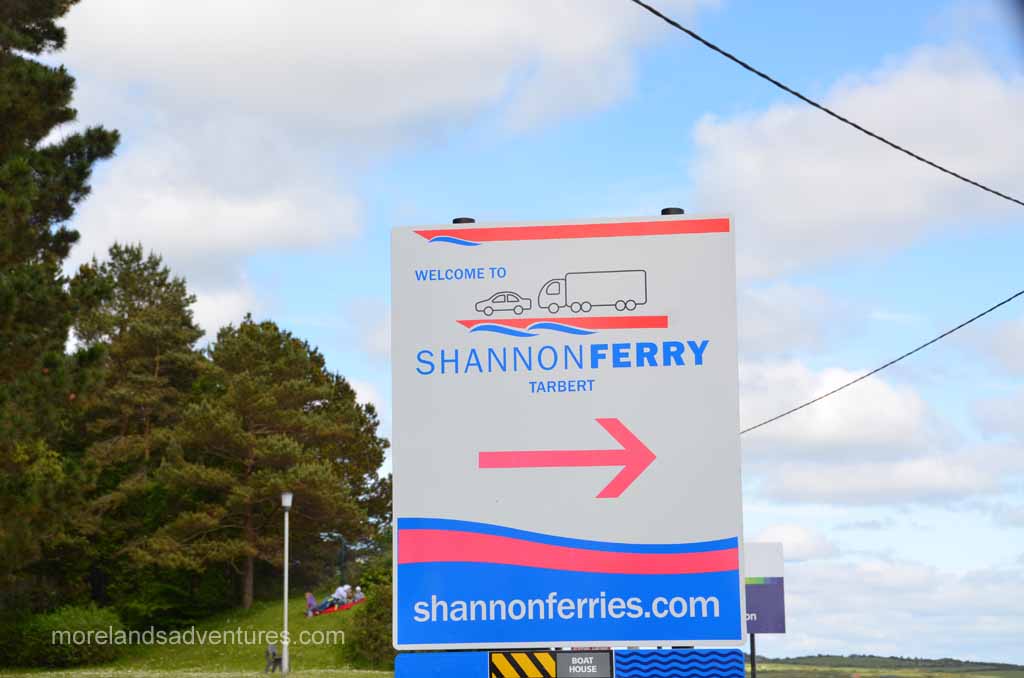After our second morning tour of Ballinalacken Castle, we headed right next door to Doolin Cave. The cave is home to the largest (by weight) free-hanging stalactite in the world and the longest in the northern hemisphere at 23 feet long. After descending over 80 feet down into the cave, our 17-year-old guide took us into the Great Stalactite chamber in complete darkness. He then turned on the lights to simulate how the first explorers to discover it in 1952 would have first seen it after crawling in darkness before lighting oil lamps in the chamber. It made for a dramatic reveal as the stalactite was an amazing sight.
Next we stopped for a quick look at Gleninsheen Wedge Tomb. While it wasn’t all that impressive to look at, it was dated to 2500 BC and was worth the stop as it was just off the side of the road.
The next stop was Poulnabrone Dolmen, a portal tomb dating back to as early as 4200 BC. Excavations in 1985 revealed the burial of between 16 and 22 adults and 6 children beneath the monument. The landscape around the tomb were also fascinating. Many years ago, the limestone cracked and over time the erosion from acid in rainwater widened and rounded the cracks to create a patchwork of rock and crevices (see gallery).
The next stop was Caherconnel Stone Fort and Sheep Dog Demonstration. While the fort wasn’t as impressive as others we had visited, they had done an excellent job in presentation. The highlight however, was the sheep and cattle dog demonstrations. The farm owner explained how after long training when the dog is first taken out to the sheep that he either had “the stare” necessary to control the sheep or he didn’t. If he didn’t, the training was for nothing and the dog would be used as a pet and never as a working sheep dog. He used both voice and whistle to demonstrate how the dog could be instructed from a distance to stay, walk up to the sheep, circle left, and circle right to maneuver the sheep through obstacles in the field. It was very impressive. He did a similar demonstration with the cattle dog, except the cattle dog would bite the hind leg of the cow if necessary. He explained that the dog knew to only bite the leg that was on the ground so that by the time the cow took another step, he was safely away from getting kicked in the face.
We made an unplanned stop at Killinaboy Church as we drove past it and thought it looked interesting.
Our last major site of the day was maybe one of our favorites so far, Kilmacduagh Monastic Ruins. The site dates back to the 7th century with parts of the existing structures dating back to as early as the 10th century. While it is visible from the road, all of the gates and doors to the interiors are locked. We had read online that if you go to the house across the street, the caretaker will give you a key to enter all the buildings, and she did. So we ended up watching tourists come and go on the street while we went everywhere like we owned the place.
We made one stop in Galway to pick up rings for our vow renewal the following day, before arriving at our stay for the next 3 nights in Connemara, the Ballynahinch Castle Hotel.

































































2 Responses to Day 9 – Doolin to Connemara
It looks like you are having a great time! Of all the places in the world, I think Ireland would be my favorite place to go, too. Jimmie
Just great.